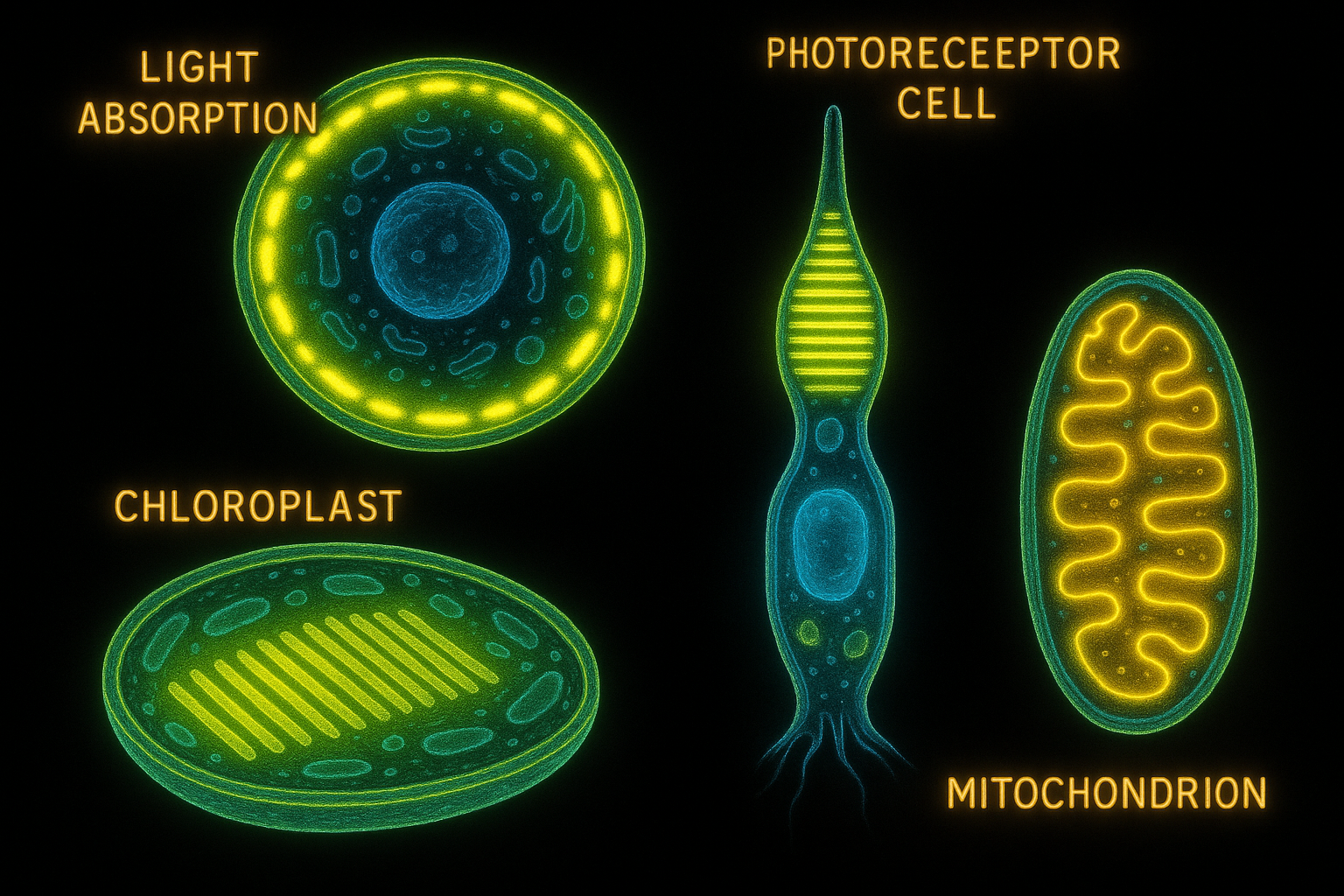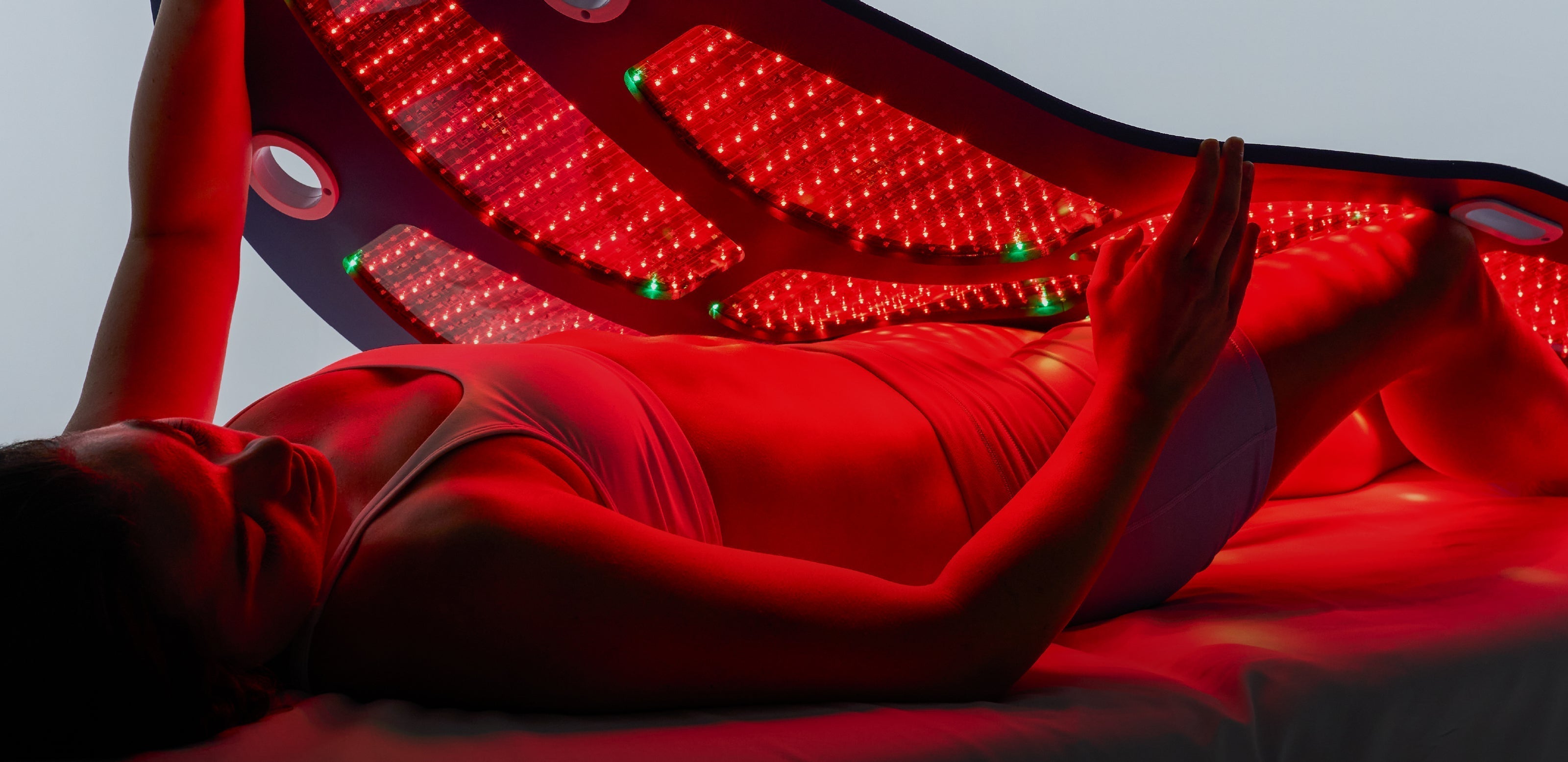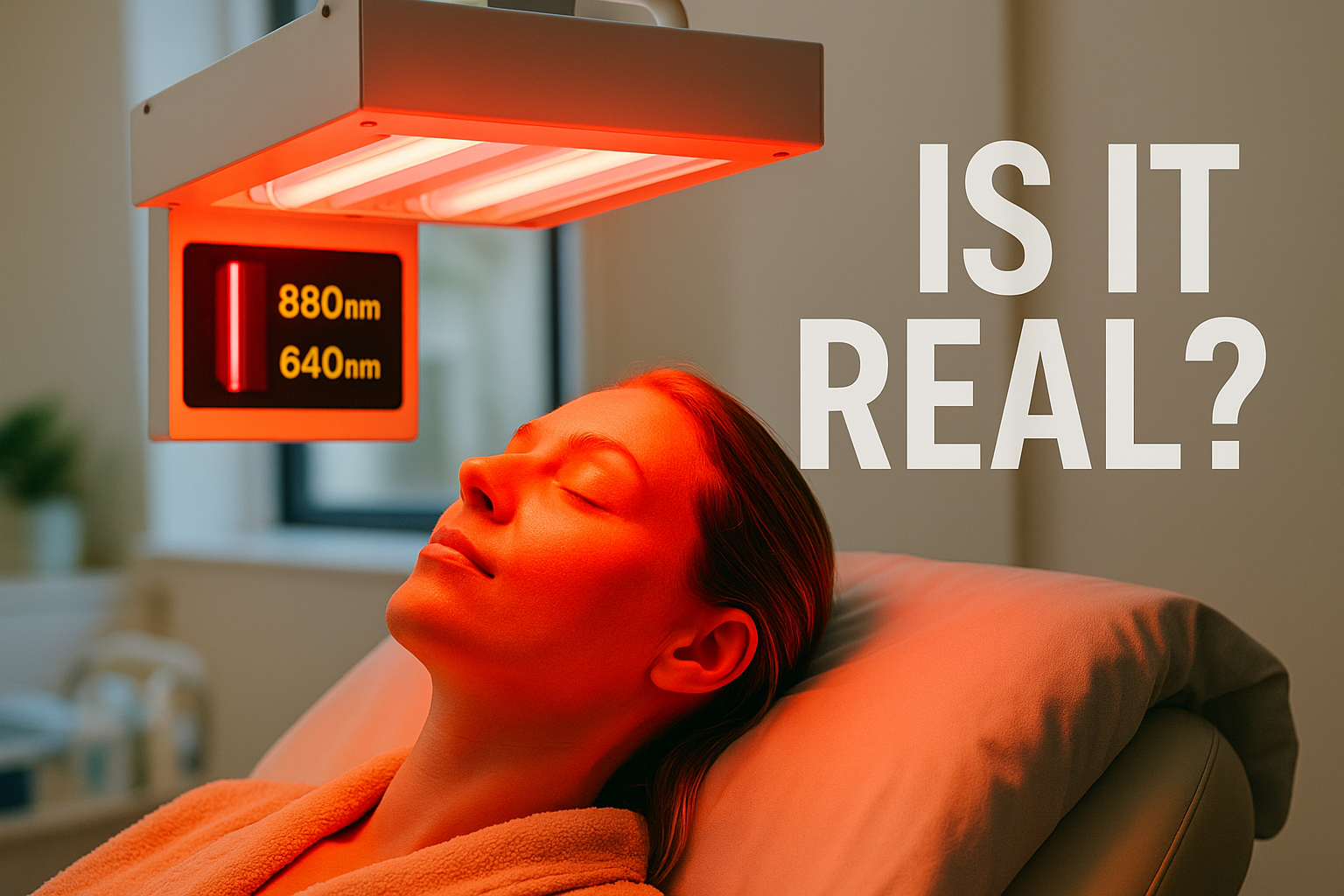
Why wavelength matters?
Think of wavelength as the shape of a key and the body’s light-sensitive molecules (chromophores) as locks. Only keys that match a lock will turn it. In light therapy, the right wavelength reaches the right depth and is absorbed by the right chromophore to trigger useful biology. The wrong wavelength either can’t open the lock, opens the wrong lock, or simply heats and harms tissue.
How wavelength controls the effect (the “why”):
Cells and bacteria contain specific light-absorbing molecules with characteristic absorption spectra. For example, porphyrins in acne bacteria strongly absorb blue light (~415–465 nm); cytochrome c oxidase in mitochondria absorbs red (~630–660 nm) and near-infrared (~800–880 nm) light. When a matching wavelength is absorbed, its energy is turned into a chemical signal inside the cell — increased ATP production, changes in reactive oxygen species, altered gene expression — that leads to healing, reduced inflammation, collagen production, or bacterial death. If the wavelength doesn’t match any useful chromophore, the light passes through or is reflected and no photobiological effect occurs.
How wavelength controls depth:
Shorter wavelengths (blue) scatter and are absorbed near the surface, so they act at the epidermis. Red light penetrates deeper into the dermis where skin cells and collagen live. Near-infrared penetrates deepest — through skin into muscle and joints. Put simply: blue = surface, red = deeper skin, NIR = deep tissue. If you want to treat acne, you need surface-acting blue light; if you want to stimulate collagen or speed wound healing, you need red light; if you want muscle or joint repair, you need near-infrared.
What happens if you use the wrong wavelength:
-
No therapeutic effect. If the light isn’t absorbed by a relevant chromophore, nothing useful happens — you waste time and energy with no benefit.
-
Wrong depth = wrong target. A wavelength that’s too short will only affect surface cells and won’t reach deeper tissues; a too-long wavelength (or one with strong water absorption) may not target the intended cells.
-
Heating instead of biology. Some wavelengths (especially far-infrared or very high power levels) are absorbed by water and produce heat rather than triggering photobiomodulation. Heating can be useful in some therapies, but it’s not the same mechanism and can damage tissue if uncontrolled.
-
Harmful effects with high-energy light. Ultraviolet (UV) wavelengths (<400 nm) have higher photon energy and can damage DNA, accelerate photo-aging, and increase cancer risk — they’re not used for photobiomodulation.
-
Unwanted systemic effects. For example, excessive blue light exposure at night can suppress melatonin and disturb sleep/circadian rhythm.
-
Incorrect dosing amplifies the problem. Wavelength is necessary but not sufficient: dose and irradiance matter. Photobiomodulation shows a biphasic response — too little light produces no effect; too much can inhibit healing or cause heat damage. So a correct wavelength delivered at the wrong dose can still be ineffective or harmful.
Putting it into practice (practical takeaways):
Use devices that clearly state their wavelengths (e.g., blue ~415–465 nm, red ~630–660 nm, NIR ~800–880 nm) and list irradiance/fluence so you can match the target tissue and clinical goal. Avoid UV for PBM. Remember that wavelength + dose + treatment time together determine whether you get safe, measurable benefits (skin health, collagen, acne control, pain relief) or nothing useful — or worse, heat or tissue damage.



Leave a comment
This site is protected by hCaptcha and the hCaptcha Privacy Policy and Terms of Service apply.